24 Hours in Mumbai, India’s exhilarating high-energy metropolisVEEN Scene 013

Built on seven fused islands on the edge of the Arabian Sea, India’s most populous city is made up of a collection of eclectic neighbourhoods fuelled by a buzzing street life that stimulates all the senses. Fast-paced Mumbai is an influential hub for art, fashion and design and draws visitors with its fascinating mix of architectural styles, cutting-edge restaurant scene, and plethora of chic boutiques.
Mumbai may be its official name for the past 25 years but for locals it’s still affectionately called Bombay. Mumbai is the financial capital of banks and business, while Bombay is about all the fun stuff: Bollywood, bhel puri (a popular street food) and beaches. The home of over 20 million, cosmopolitan Mumbai is a city of many diverging yet parallel worlds where the old and new, the traditional and contemporary, the shabby and swanky, sit side by side. For the international visitor, Mumbai can be exhilarating for the senses and even intoxicating, and always astonishing. Ready to dive right in? You’ll find your feet quickly thanks to this handy guide on how to spend 24 hours in the city of dreams.
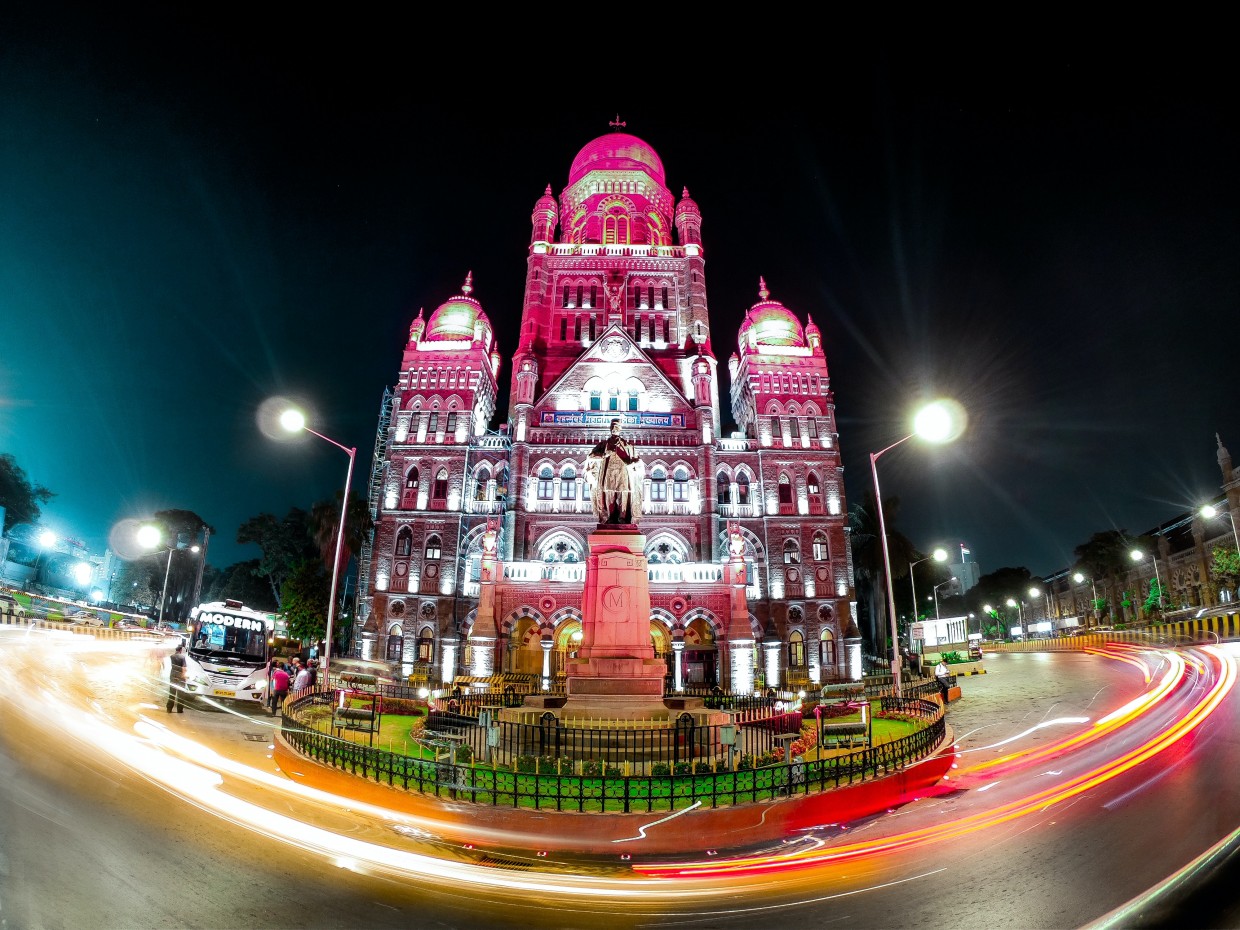
Despite its fast-paced urban frenzy, Mumbaikars are inescapably forced to slow down with the daily grinding reality of bumper-to-bumper traffic. You can blame this on geography: the city occupies a long narrow peninsula jutting into the Arabian Sea and moving between its business district in South Mumbai and the residential areas of the north of the city requires a huge dose of patience. To get around you can rely on the city’s iconic black and yellow taxis which are plentiful and pocket-friendly, but Uber and Ola (India’s equivalent of the ride-hailing app) cabs are also a comfortable way to get from A to B. But by far the quickest way to cross this sprawling metropolis is via the local rail network. However, the less intrepid will want to avoid this transport option at peak hours when trains are impossibly crowded.
The unrivalled views of Mumbai’s skyline of soaring skyscrapers with the sea serving as a dramatic backdrop will leave you gawking from Asilo, the rooftop bar on the 40th floor of St Regis Mumbai. This upscale hotel is the city’s tallest building and along with the five-star views come exclusive extras, most notably a 24-hour butler service for some decadent pampering. Other excellent reasons to camp here include the outdoor pool, wellness facilities such as the spa and gym, five restaurants to choose from, and a buzzy cocktail lounge and nightclub.
Walkable and vibrant, compact Colaba in South Mumbai is the place to start your acquaintance with the city. This is where you’ll get a feel for the old Bombay of monumental century-old buildings of the Raj which rub shoulders with exquisite examples of Art Deco architecture and colonial-style mansions. Colaba Causeway is its main thoroughfare lined with pavement stalls hawking clothing, jewellery, sunglasses and sandals, while in the narrow side streets you’ll come across chic eateries and fashionable boutiques.
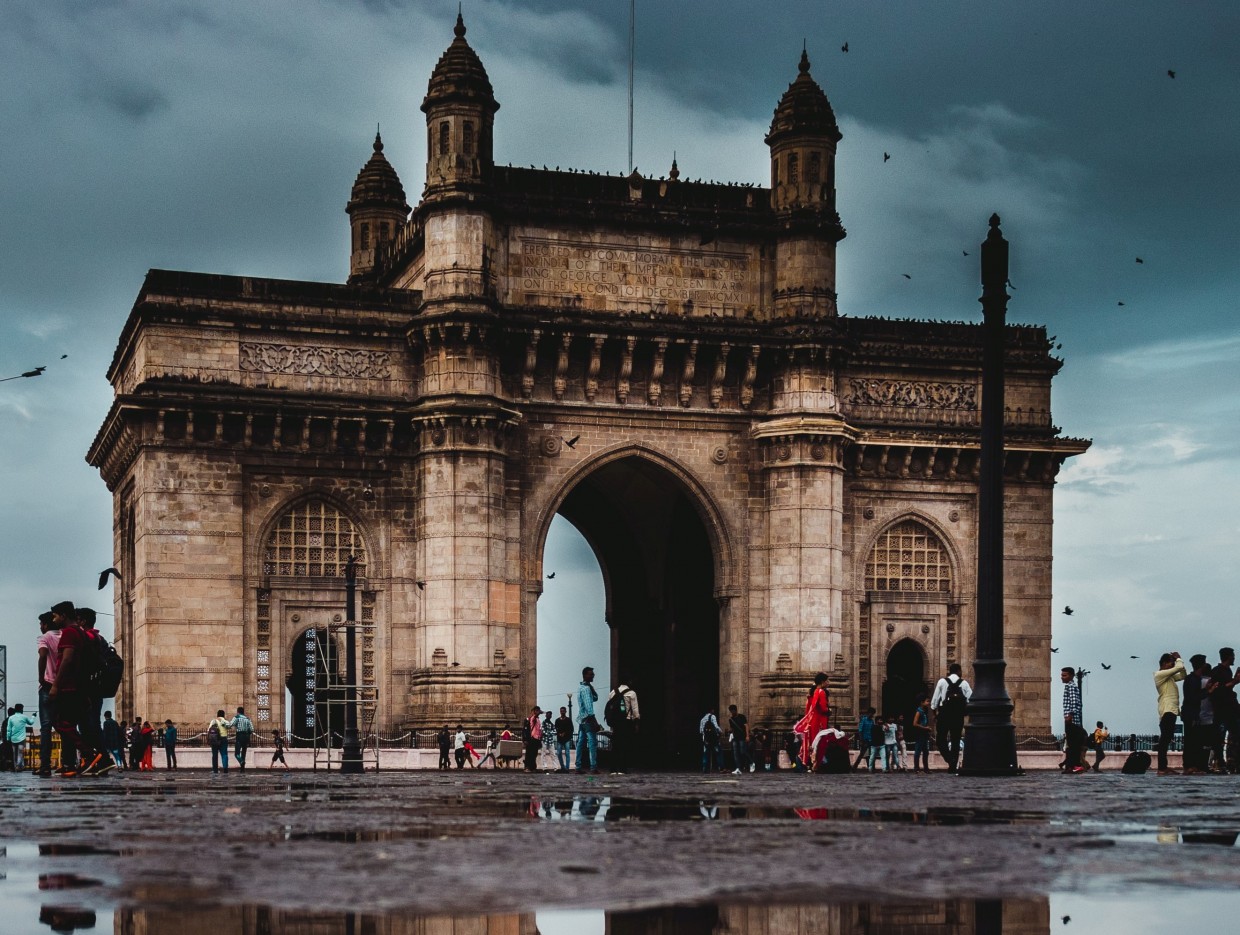
Colaba is also home to Mumbai’s most iconic landmark that draws crowds of visitors at any time of day. The monumental Gateway of India is a 26-metre-high triumphal arch perched on the edge of the seafront. This is where King George V and Queen Mary landed in India in 1911, and also the spot where the last of the British troops departed at India’s independence in 1947.
For hotelier and entrepreneur Samyukta Nair, diverse and dynamic Colaba was the perfect locale for Clove, her beautiful lifestyle boutique. “Colaba has lots of charm and character that gives a sense of a past era,” she says of the neighbourhood. “There’s architecture, there’s food, there’s culture. It has the perfect mix of modern life and old-world charm.” The boutique is set within a handsome period building embellished with an Art Deco facade. Step through the wrought iron gates painted powder pink and push open the front door and you’ll think you’re entering someone’s stylish home. Inside is a fabulous collection of Indian designer fashion, jewellery and home décor. “We support young designers who curate and create,” she adds. “All our fashion, design, décor, jewellery and homewares are 100 percent India-sourced and created by Indian designers. We have recently added furniture by Freedom Tree that appeals to the Colaba aesthetic which is very relaxed and inspired by the idea of slow living.”
Lovers of textiles will delight in the gorgeous collections at Raw Mango, a high-end shop showcasing India’s rich handloom tradition. Inside an arresting century-old heritage building next to the Taj Mahal Palace Hotel, are contemporary saris, stoles and garments made from Indian handwoven textiles and beautifully presented in an elegant and minimalist space.

Back on Colaba Causeway, head northwards just a few blocks to reach historic Kala Ghoda, the city’s eclectic arts district with more museums and art galleries than you could possibly visit in a day or even a week. Once known as the Prince of Wales Museum, the Chhatrapati Shivaji Maharaj Vastu Sangrahalaya is notable for its excellent collection of delicate Indian miniature paintings and Buddhist and Hindu stone sculptures. Fans of contemporary art will want to check into Jehangir Art Gallery, a landmark museum of India’s modern art scene showcasing works by greats like M.F Hussain and S.H Raza. In keeping with its ethos of making art accessible for all, entry is free.
Once you exit the gallery, pause to admire the striking architecture of the heritage buildings just opposite: the imposing neo-Gothic facade of Elphinstone College, the peaked archways and turrets of the Indo-Saracenic David Sassoon Library, and the majestic four-storey Army & Navy Building.
Once you’ve had your dose of high culture, it’s time to hit pause at Kala Ghoda Café, tucked in a side lane just a short walk away. This cozy neighbourhood café is also a bakery, wine bar and part-time gallery. The coffee is South Indian and organic, ingredients are locally sourced, and the breads and cakes are baked on-site. On the menu are western-style breakfasts of eggs, waffles, muesli, salads, Thai-style curry with organic black rice, as well as typical Parsi dishes like akuri (seasoned scrambled eggs) and sali boti (a sweet and spicy curry of potato and lamb).
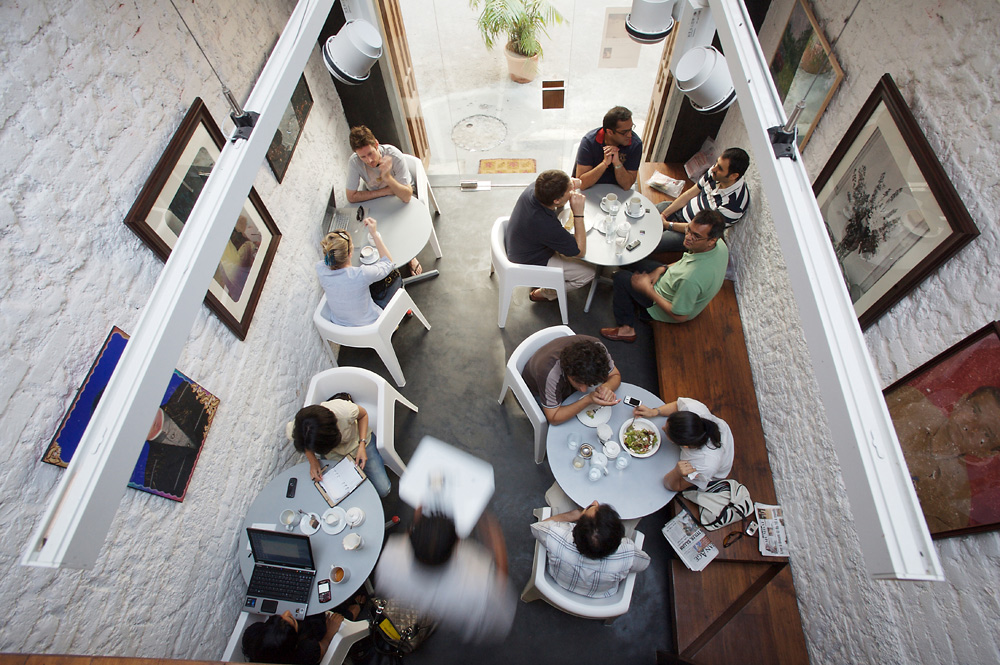
“Kala Ghoda is special,” says Farhad Bomanjee, the café’s owner. “It’s very historic and diverse, and very walkable. You’ll find little shops here that have been around for decades: stationery shops, bookbinders, designers, South Indian snack food places. At the same time, there’s the part of the neighbourhood where gentrification has accelerated in the past five years, with nice boutiques, restaurants and cafes.”
Just a few steps away at Kulture Shop, you’ll find uber cool urban artwork. This design collective supports independent graphic artists who contribute their fabulous designs to merchandise peddled in the shop. Their colourful creations become contemporary wall art or are printed on t-shirts, mugs and cloth bags, but also cushions and coasters. These eye-catching and useful objects are perfect as gifts for your favourite people or souvenirs of your Mumbai adventure.
With your new purchases in hand, take a brisk stroll further northwards along Nagindas Master Road and onto D.N. Road until you spot the sprawling Chhatrapati Shivaji Terminus. This awe-inspiring building, also known as Victoria Terminus, or simply ‘VT’ was completed in 1887 to mark 50 years of Queen Victoria’s rule. Today it’s one of India’s busiest train stations with three million commuters transiting through it every day, and is protected as a Unesco World Heritage Site as an outstanding example of Victorian Gothic Revival architecture. Take a step back to admire its central dome, turrets, spires and pointed arches before getting close to take in all the delightful details. Spot the gargoyles, floral motifs, and the two columns straddling the entrance: one crowned with a lion and the other with a tiger, representing the United Kingdom and India.
If by now clock hands are slowly stretching towards noon, it’s time to head to Churchgate Station for a fascinating glimpse into how life in this seemingly hectic city is ingeniously organised. On every working day, teams of thousands of men called dabbawalas dressed in white shirts and caps collect 200,000 dabbas (food containers) by bicycle and deliver them to office workers without a hitch. Here you’ll see them descending from trains and balancing long wooden pallets loaded with dabbas on their heads, before transferring them onto carts for midday delivery.
Next hop on a train and travel six stations northwards to Mahalaxmi. On exiting the station, turn left on the bridge for the awesome sight of the open-air laundry at Mahalaxmi Dhobi Ghat. This is where hundreds of dhobis (washermen) lined up at concrete troughs scrub and beat the dirt and grime out of the city’s laundry by hand.
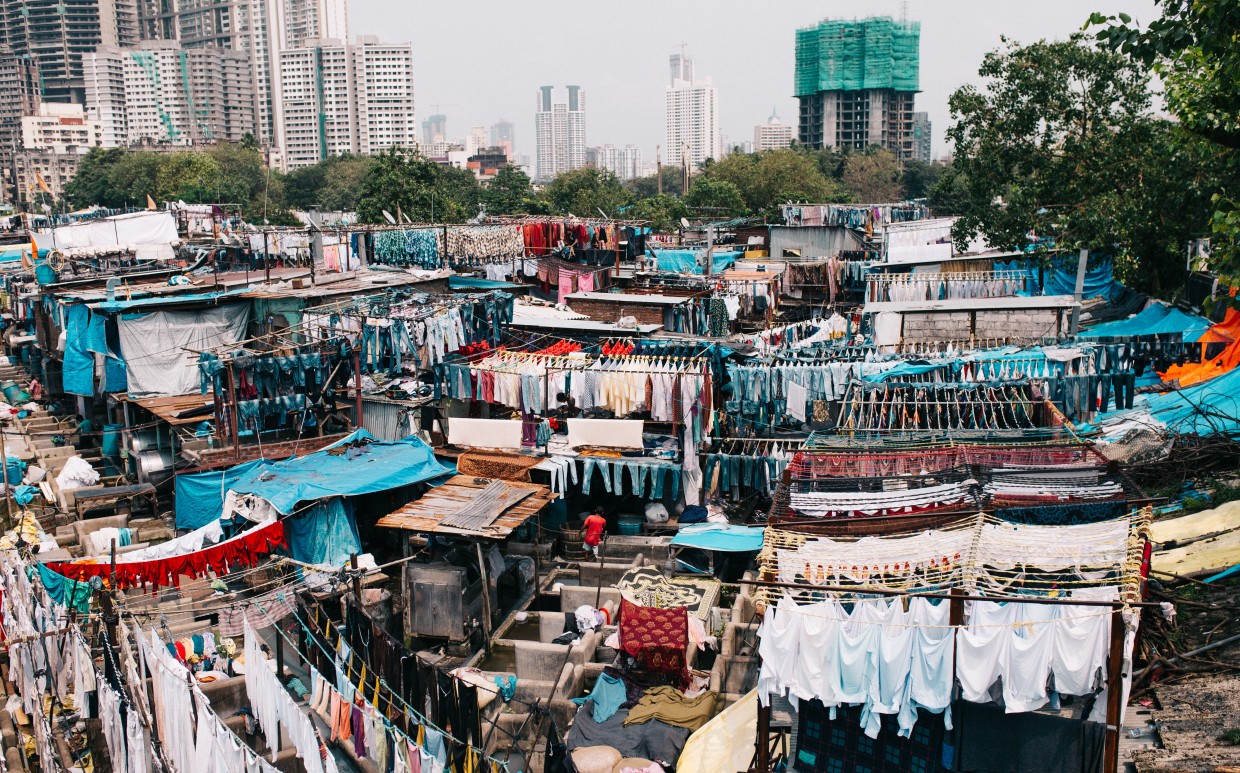
Mumbai’s abandoned textile mills, once the backbone of local industry, are making way for retail complexes of design boutiques, furniture shops and high-end eateries. One of the more recent examples is Laxmi Woolen Mills in Mahalaxmi. “We’re in a somewhat hidden location so finding us is part of the experience,” says Aditi Dugar, co-owner of Masque, a fine-dining hotspot and the only restaurant in the complex. The focus here is on seasonality with a 10-course chef’s tasting menu created with high-quality produce sourced from the restaurant’s farm and its network of small-scale farmers. “We follow three pillars: Indian ingredients, innovation and sustainability,” shares Dugar. “Not only do we use only seasonal ingredients at their prime but we also use every part to make chips, or as an infusion for drinks, or we pickle the skins. In this way we’re also trying to be zero waste and create our own eco-system.”
For Indian fine-dining in a seriously swanky décor, head to Trèsind in Bandra where ‘modernist’ Indian cuisine is the order of the day. The nine-course tasting menu takes diners on a gastronomic journey through India’s diverse regional cuisines. It begins with bite-sized chaat (savoury snack foods) before moving around the map with dishes such as South Indian curd rice, Gujarati farsan (a spongy savoury snack) and Goan cafreal (a spicy chicken dish).
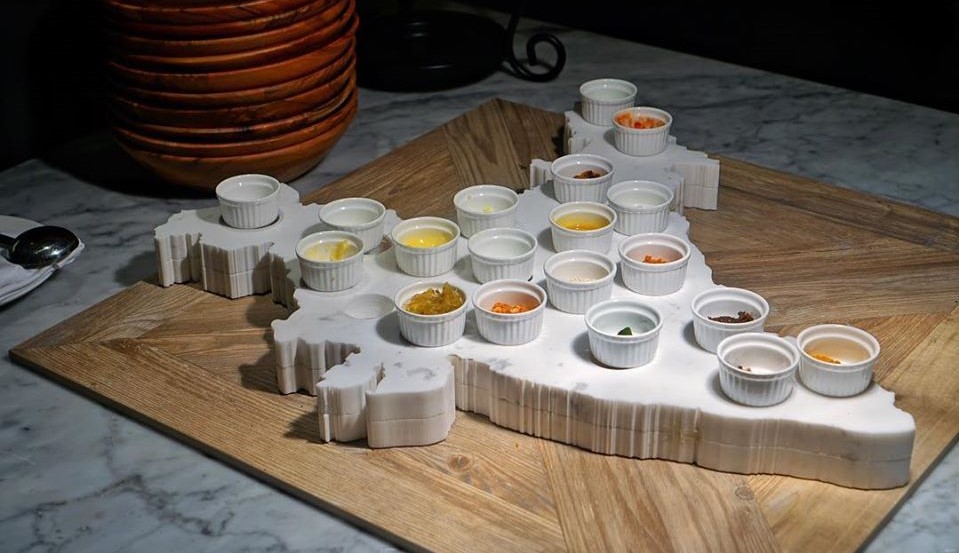
At the end of the day Mumbaikars descend on Marine Drive to enjoy the cooling sea breeze and a brisk stroll along this beloved seaside promenade. Follow the troops of power walkers from Nariman Point all the way to Chowpatty Beach, where the city flocks at day’s end to escape the biting heat. The street food vendors make a brisk business here peddling all the favourites. Sample a bite of pani puri: a deep-fried puff filled with a mix of potato, onions, and chickpeas, flavoured with tamarind water and a zesty mix of spices. Or vada pav, another classic Mumbai snack: a deep-fried potato mixture stuffed into a soft bun and served with a spicy chutney. Then join the families wading in the shallow waters as the sun descends behind the skyline and another day in Mumbai draws to a perfect close.